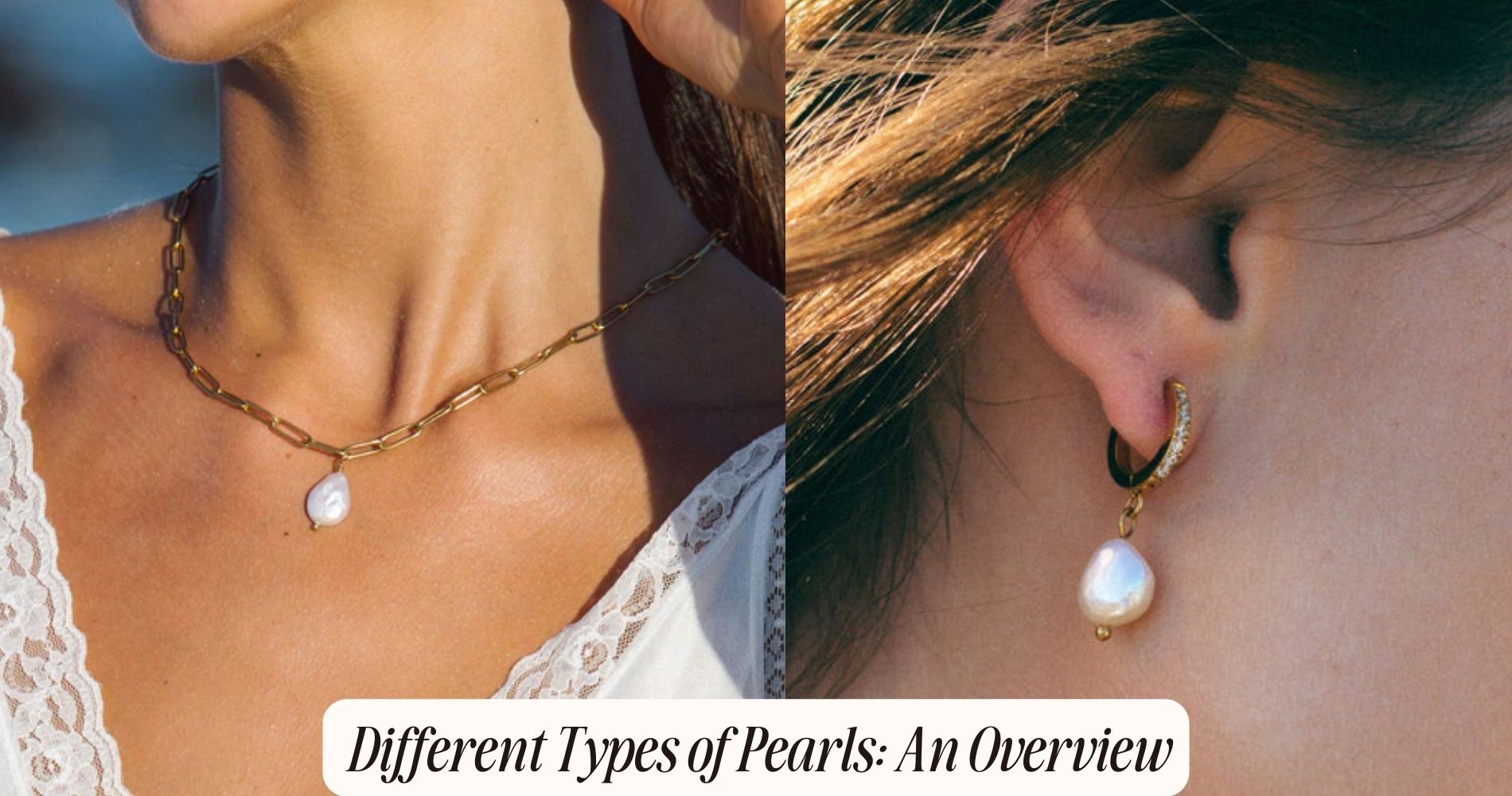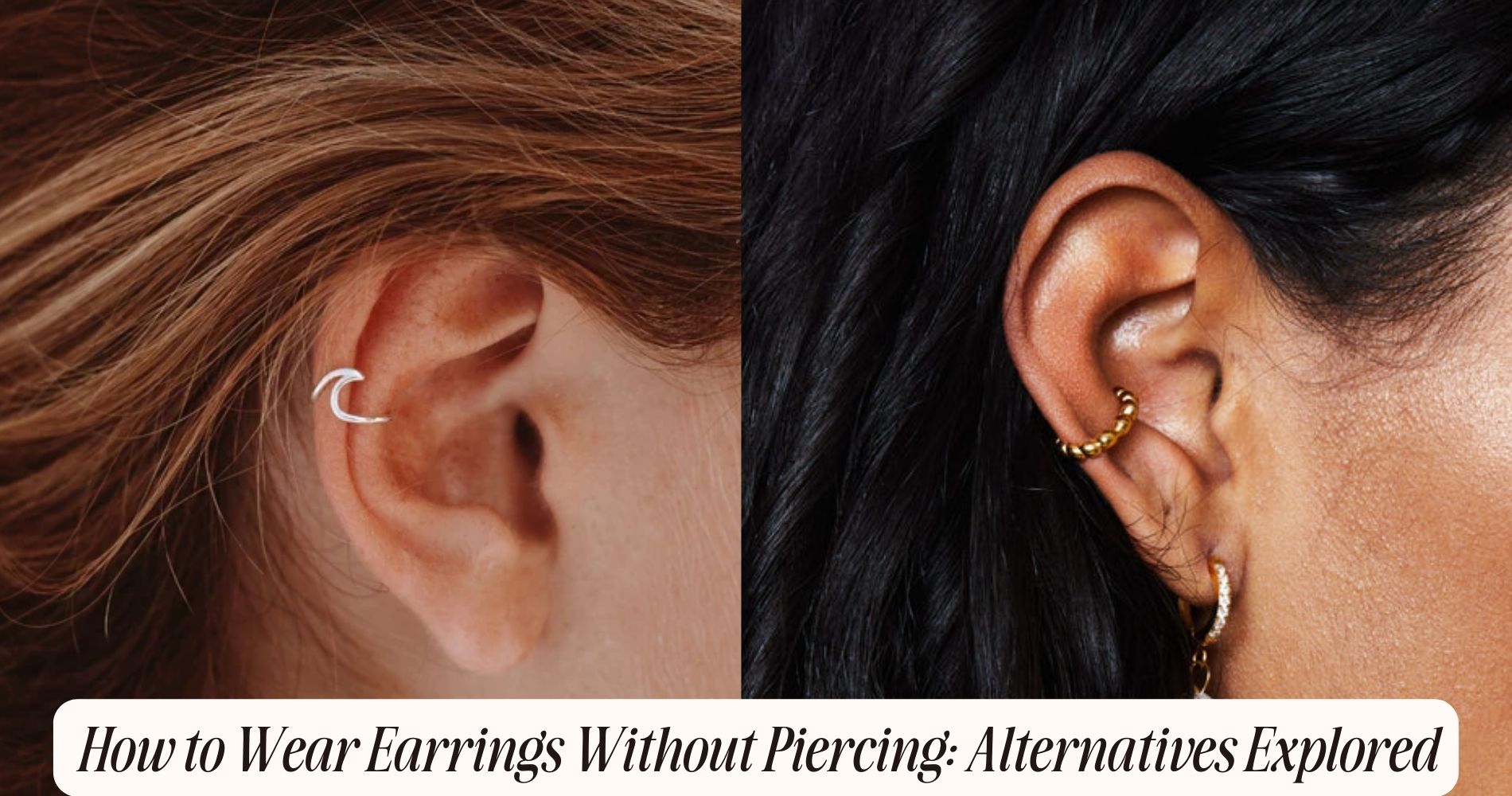
Different Types of Pearls: An Overview
Akoya Pearls
Known for their perfectly round shape and high luster, Akoya pearls are primarily cultivated in the cold waters off the coast of Japan. When you explore the intricacies of these gems, you'll discover that their cultivation occurs in meticulously managed pearl farms. These farms use the Pinctada fucata martensii oyster, which is deliberately nucleated with a small bead and mantle tissue to initiate the formation of cultured pearls.
The cultivation process in pearl farms is highly controlled to guarantee ideal conditions for nacre deposition. Temperature regulation, salinity levels, and nutrient availability are all critical factors that influence the quality of Akoya pearls. You'll find that these pearls typically form over a period of 10 to 18 months, allowing for a thick, lustrous nacre layer to develop.
The precise techniques employed in the cultivation process directly impact the pearls' luster, color, and surface quality. Akoya pearls are renowned for their mirror-like finish and generally exhibit colors ranging from white to cream, often with hints of rose, silver, or ivory overtones.
Freshwater Pearls
Shifting focus from the marine origins of Akoya pearls, let's examine freshwater pearls, primarily cultivated in the calm waters of rivers and lakes using various species of freshwater mussels. Unlike saltwater pearls, freshwater pearls are nucleated with mantle tissue rather than a bead, allowing for the production of multiple pearls per mussel. This cultivation process results in pearls with unique characteristics.
Freshwater pearls are renowned for their impressive variety of colors, ranging from white and pink to lavender and even metallic hues. These colors occur naturally, though they can be enhanced through treatments to meet market demands. The luster of freshwater pearls is typically softer compared to their saltwater counterparts, but advancements in cultivation techniques have considerably improved their quality over recent years.
Size and shape are also notable factors. Freshwater pearls can be round, baroque, or even coin-shaped, offering a versatile selection for various jewelry designs. The cultivation process often takes between two to six years, allowing the pearls to develop thick nacre layers, contributing to their durability and appeal.
Tahitian Pearls
Tahitian pearls, often cultivated in the warm waters of French Polynesia, exhibit a distinctive dark hue ranging from black to green, making them a sought-after choice for jewelry connoisseurs. These pearls are produced by the black-lipped oyster (Pinctada margaritifera) and are renowned for their black luster, which sets them apart from other pearl varieties. The black luster isn't just a single shade; it can display overtones of blue, green, aubergine, or even peacock, adding to its exotic allure.
When selecting Tahitian pearls, you'll notice their substantial size, typically ranging from 8 to 18 millimeters. This size, combined with their exotic origins, underscores their uniqueness. The cultivation process is meticulous, involving measures that guarantee the pearl's surface is of high quality and free from significant blemishes. The harvest period, often taking 18 to 24 months, allows for the development of this exceptional luster and color.
Tahitian pearls are often used in high-end jewelry, such as necklaces, earrings, and rings. Their unique coloration and size make them ideal for pieces that demand attention. For those who appreciate the combination of exotic origins and striking black luster, Tahitian pearls offer an unparalleled option.
South Sea Pearls
Moving from the allure of Tahitian pearls, South Sea pearls stand out with their impressive size and remarkable luster, primarily cultivated in the waters of Australia, Indonesia, and the Philippines. These pearls are renowned for their larger size, often ranging from 9mm to 20mm in diameter. The size is attributed to the Pinctada maxima oyster, which is notably larger than other pearl-producing oysters.
South Sea pearls exhibit a spectrum of colors, but the golden hue is particularly prized. This distinct coloration results from the gold-lipped variety of the Pinctada maxima oyster. The nacre, or the pearly layer, is thicker in South Sea pearls, contributing to their unparalleled luster and iridescence. This thickness also makes them more durable and resistant to wear.
When evaluating South Sea pearls, you should consider factors like surface quality, shape, and nacre thickness. Perfectly round pearls are rare and highly valued, though baroque shapes can also be striking. The surface should be smooth with minimal blemishes, enhancing the pearl's overall appeal.
Investing in South Sea pearls means acquiring a piece with both aesthetic and substantial value, a true proof of nature's artistry.
Keshi Pearls
Though often viewed as a byproduct of cultured pearl farming, Keshi pearls stand out for their unique shapes and exceptional luster, making them a fascinating subject for pearl enthusiasts.
Unlike traditional cultured pearls, Keshi pearls form without a nucleus. Instead, they result from the oyster's rejection of the implanted nucleus while continuing to produce nacre. This leads to organic formations that can vary greatly in shape and size.
Keshi pearls are mainly composed of pure nacre, which contributes to their unique luster. This high nacre content means these pearls exhibit an iridescence and depth of color that many find superior to that of nucleated pearls. The absence of a nucleus allows Keshi pearls to develop more freely, resulting in baroque and irregular forms that are highly prized in bespoke jewelry designs.
When assessing Keshi pearls, you'll want to take into account factors such as nacre thickness, surface quality, and luster. Because they're organic formations, their value often depends on these specific attributes rather than uniformity.
Keshi pearls are available in various colors, including white, silver, gold, and even black, making them versatile for different design preferences. Their unique luster and extraordinary shapes offer an unparalleled aesthetic value in the world of pearls.
Conclusion
In examining Akoya, Freshwater, Tahitian, South Sea, and Keshi pearls, you've discovered the unique characteristics each type offers.
Whether it's the classic roundness of Akoya, the diverse hues of Freshwater, the exotic allure of Tahitian, the grandeur of South Sea, or the organic shapes of Keshi, each pearl type holds distinct appeal.
Understanding these differences allows you to make informed decisions, ensuring your selection aligns with specific aesthetic and quality preferences.























Leave a comment
This site is protected by hCaptcha and the hCaptcha Privacy Policy and Terms of Service apply.